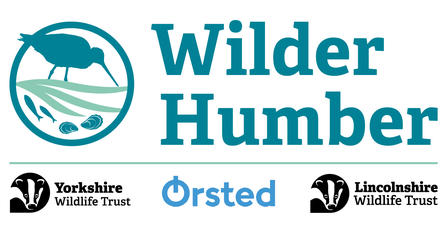
Restoring native oysters in the Humber estuary

The Humber estuary
Estuaries around the UK, including the Humber and its surrounding habitats, play a very important role for wildlife biodiversity and our way of life. Not only does the Humber estuary have multiple conservation designations, including Site of Special Scientific Interest (SSSI) and "Wetland of International Importance" under the Ramsar Convention, it is also one of the busiest and fastest-growing trading areas in Europe, with an average of 40,000 ship movements per year. Furthermore, the estuary drains around 20% of the total land surface of England into the North Sea, and acts as a buffer zone to coastal erosion and tidal surges. Consequently, the Humber is a vital component of the country's well being and is a major contributor to the UK's economy.
However, the estuary’s conservation status was downgraded to unfavourable condition by Natural England in 2012. This was attributed to habitat loss, commercial development, and the decline of precious habitats, such as sand dunes, saltmarsh, seagrass, and native oysters.
Native oysters & the Humber estuary
Native oysters are a bivalve mollusc, which means their exoskeleton is made up of two shells protecting the soft-bodied oyster inside. Oysters are filter feeders; they use their gills to absorb oxygen and filter phytoplankton and other particles out of the water. An adult oyster is capable of filtering 200 litres of water - that's more than a bathtub - every day, and together, a reef of oysters significantly improves the surrounding water quality. They live on the seabed in relatively shallow coastal waters and estuaries.
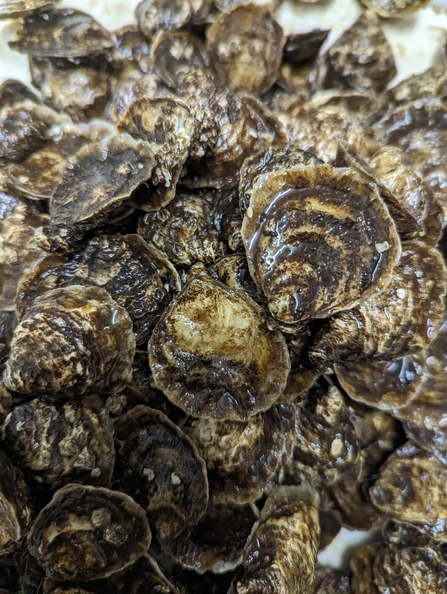
Over time oysters fuse together to create a biogenic reef, which has huge benefits for local wildlife and our coastline; not only do reefs provide a home for other wildlife, such as juvenile bass, crabs and anemones, therefore improving local biodiversity, they also absorb wave energy and protect coastlines from erosion and flooding.
The oyster reef in the Humber once stretched over four miles across the entire mouth of the estuary - a feature so vast that it posed a hazard to shipping. Yet all around our coasts, oyster populations have plummeted and Humber oysters today are functionally extinct.
Have Yorkshire Wildlife Trust reintroduced oysters in the past?
In 2019, Yorkshire Wildlife Trust introduced the first 3000+ native oysters to the aquaculture site at Spurn Point National Nature Reserve, marking the return of a keystone species that was lost from the Humber estuary in the 1900’s. Since then, our restoration teams have been trialling best practice methods to ensure native oysters are once again able to survive and thrive in the estuary.
During the trials, the oysters were confined to the aquaculture site in the Humber, using a trestle and box system. The system holds the oysters, allowing water to pass through the boxes and be filtered by the oysters.
The success of the trials in 2019 were outstanding; the native oysters grew and have shown signs of reproduction, indicated by new spat settling on the oysters.
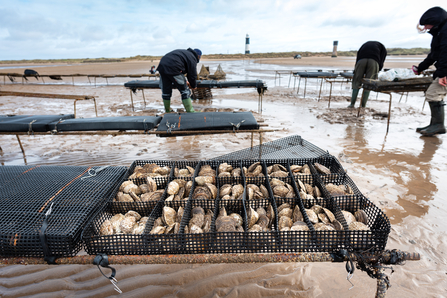
c - Spurn oysters - Finn Varney
Wilder Humber: Seascape Restoration
April 2023 saw the launch of Wilder Humber, an ambitious 5-year programme seeking to restore marine habitats and species throughout the Humber estuary.
Wilder Humber recognises that no habitat functions in isolation, and each individual habitat influences the wider ecosystems. Therefore, delivered through a pioneering conservation partnership between Yorkshire Wildlife Trust, Lincolnshire Wildlife Trust, and international green energy leader Ørsted, the programme is trialling a seascape scale model. The model specifically combines sand dune, saltmarsh, seagrass, and native oyster restoration to maximise conservation and biodiversity benefits. We believe that by targeting multiple habitats for restoration, there will be huge benefits for other habitats through their ecosystem services.
As part of the seascape restoration efforts, Wilder Humber are reintroducing half a million native oysters, building on the success of the trial populations in the estuary at Spurn Point in 2019.
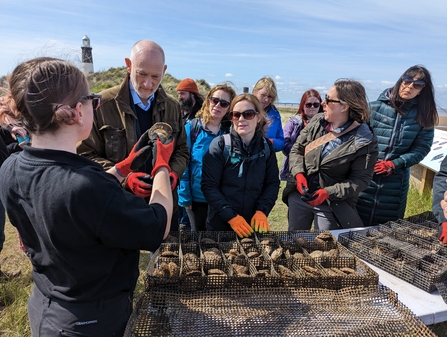
Monitoring & next steps…
We regularly measure and record the length, width (mm) and wet weight (g) of the oysters in order to monitor their growth and survival.
This is useful, as larger oysters are able to filter water more effectively than their smaller neighbours, taking all the nutrients and therefore outcompeting them. To prevent this, we grade the oysters and separate the larger individuals to provide more favourable conditions for the survival of each size.

Once the oysters have grown to an optimum size, the exciting next step will be to remove them from the trestle boxes in the estuary and relay each oyster as a loose individual. Wilder Humber will then research and trial ways to help encourage reef formation, providing a functional habitat from which other wildlife can benefit, such as barnacles who use the reefs as initial building blocks to settle on.
The 500,000 oysters that we relay into several sites across the Humber will act as the foundation from which an oyster reef can form, which will take many generations of reproduction!
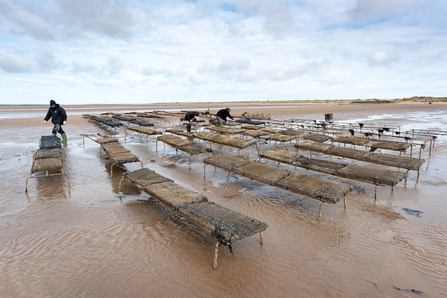
Follow our story
To follow Wilder Humber’s progress and our native oysters’ journey, and to find out about upcoming engagement events, visit www.wilderhumber.org.uk

